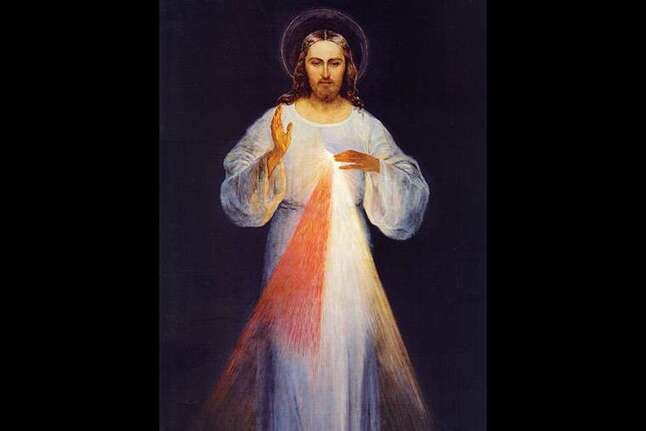|
In April of 2000, St. John Paul II established this second Sunday of Easter as the Sunday of Divine Mercy. Doing so, he recognized the private revelations given by Jesus to St. Faustina Kowalska (1905-1938).
St. Faustina Kowalska was a young Polish nun born at the beginning of the 20th century. Over the course of several years she had visions of Jesus, whereby she was directed to create an image and to share with the world revelations of Jesus’ love and mercy. St. Faustina received her first revelation of the merciful Jesus in February 1931. At the time, she had made her first vows as one of the Sisters of Our Lady of Mercy. In her diary, St. Faustina recounted Jesus’ request: “My daughter, tell the whole world about my inconceivable mercy. I desire that the feast of Mercy be a refuge and a shelter for all souls, and especially for poor sinners. On that day the very depths of my tender mercy are open. I pour out a whole ocean of graces upon those souls who approach the fount of my mercy.” She saw Christ with His right hand raised as if giving a blessing, and the left touching His chest. Two rays, one pale, one red – which Jesus said are to signify water and blood – are descending from His heart. St. Faustina recorded all of her visions and conversations with Jesus in her diary, called Divine Mercy in My Soul. Reflecting on this vision and Christ’s statement, St. John Paul II wrote, “Blood and water! We immediately think of the testimony given by the Evangelist John, who, when a soldier on Calvary pierced Christ’s side with His spear, sees blood and water flowing from it (cf. Jn 19: 34). Moreover, if the blood recalls the sacrifice of the Cross and the gift of the Eucharist, the water, in Johannine symbolism, represents not only Baptism but also the gift of the Holy Spirit (cf. Jn 3: 5; 4: 14; 7: 37-39).” In his encyclical Dives in Misericordia (On the Mercy of God) (1980) — St. John Paul II wrote that Christ “makes incarnate and personified mercy. He Himself, in a certain sense, is mercy.” This divine mercy involves the sacrificial self-gift that God offers to us, flowing from the heart of the Father, demonstrated in the death of the Son, and given by the power of the Holy Spirit. St John Paul II inserted today’s feast into the Church calendar on April 30, 2000, the canonization day of St Faustina. It was no incidence that St Pope John Paul II was also canonized on Divine Mercy Sunday in 2014. And so the Church’s third millennium was launched with a new devotion, a beautiful new piety rooted in the most ancient truths. Divine Mercy, do not hold our sins against us. Be a merciful Father who judges us in the fullness of Your power, punishing when needed, but granting mercy when we need it more, most especially when we are too saturated with pride to request it. By Fr Tomas Original painting of the Divine Mercy, by Eugeniusz Kazimirowski in 1934. Wikimedia Commons 4.0.
0 Comments
Leave a Reply. |
Lucy Stothard & Fr David & Fr TomasLucy is an Intern at S Giles, Fr Tomas is is our curate, and Fr David is the vicar. We hope to offer some regular words of encouragement during this difficult time. Archives
May 2020
Categories |


 RSS Feed
RSS Feed
